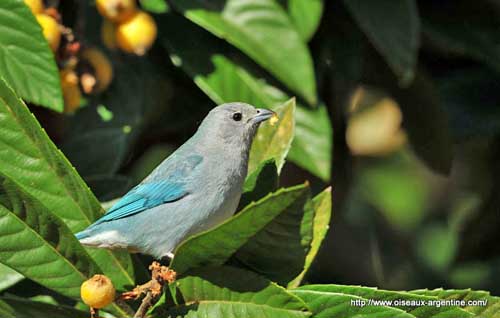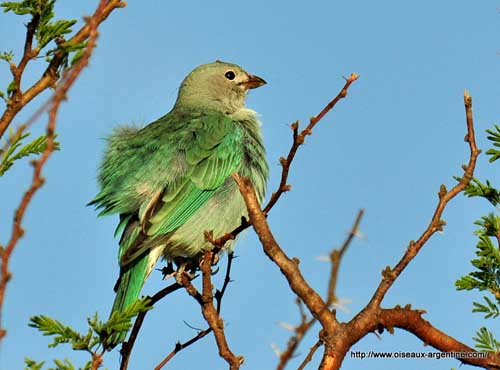
Fr: Tangara sayaca
All : Prälattangare
Esp : Azulejo Sayaca
Esp (Argentine): Celestino, Celestino común
Ital : Tangara di Sayaca
Nd: Sayaca-tangare
Sd: Sayacatangara
Port: Sanhaçu-cinzento
Photographers:
Philippe and Aline Wolfer
OISEAUX D'ARGENTINE
Text by Nicole Bouglouan
Sources:
HANDBOOK OF THE BIRDS OF THE WORLD Vol 16 by Josep del Hoyo- Andrew Elliot-David Christie – Lynx Edicions – ISBN: 9788496553781
Arthur Grosset's Birds (Arthur Grosset)
BirdLife International (BirdLife International)
SORA Searchable Ornithological Research Archive (Blair O. Wolf)
Sayaca Tanager
Thraupis sayaca
Passeriforme Order – Thraupidae Family
BIOMETRICS:
Length: 16-17 cm
Weight: 28-34 g
DESCRIPTION:
The Sayaca Tanager is one of the most common urban birds in its range.
The adult male of nominate race has uniformly dull grey head and upperparts, with bluish or greenish tinge according to the lighting.
On the upperwing, the lesser coverts are blue but often hidden. The median coverts are dusky with dull greenish-blue edges and tips. The greater coverts are similar but with narrower edges and tips. The primary coverts are dusky with dull greenish-blue broad tips.
The flight feathers are dusky with greenish-blue edges. The tail is dusky washed and slightly edged greenish-blue.
According to the lighting, the head may appear pale grey and the upperparts either greenish or bluish.
On the underparts, throat and breast are slightly paler grey, turning dull greyish-white on belly, and whitish on undertail-coverts.
The thick bill is dusky grey with blue-grey lower mandible. The eyes are dark brown. Legs and feet are grey.

Both sexes are similar, but the female has duller, greyish-brown plumage.
The immature is duller and darker than adults.
We can find three subspecies:
T.s. sayaca (here described) is found in E and S Brazil, Paraguay, NE Argentina and Uruguay.
T.s. boliviana is found in N Bolivia. This species has lesser and median wing-coverts whitish and broadly edged blue-grey. The head is paler than the back.
T.s. obscura is found in C and S Bolivia and S to W Argentina. This one is slightly darker than nominate.
There are many variations of shoulder’s colour.
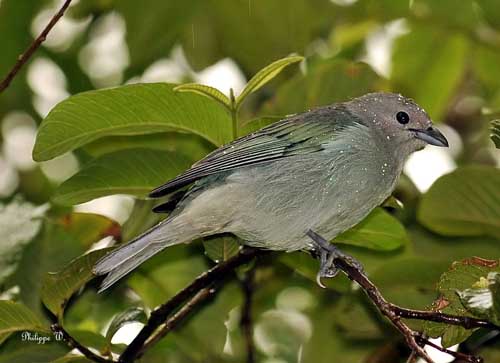
VOICE: SOUNDS BY XENO-CANTO
The Sayaca Tanager’s calls include a sharp “chup” and a higher “tzit”. The song is a variable series of short phrases. Such song can be very complex, with individual and geographical variations.
HABITAT:
The Sayaca Tanager frequents a wide range of habitats such as dry to humid, mostly semi-open areas, light woodlands, savannah with scattered trees, scrubs, second growth, trees along rivers and cultivated areas. It also frequents parks and gardens, and often occurs in urban areas. They tend to be less numerous in the upper canopy of the forest.
In some parts of the range, and especially in SE Brazil, they roost among the foliage, as well in quiet areas as in high-traffic sites. This species can be seen from lowlands to 1000 metres of elevation, and locally higher.
RANGE:
See above in “subspecies”.
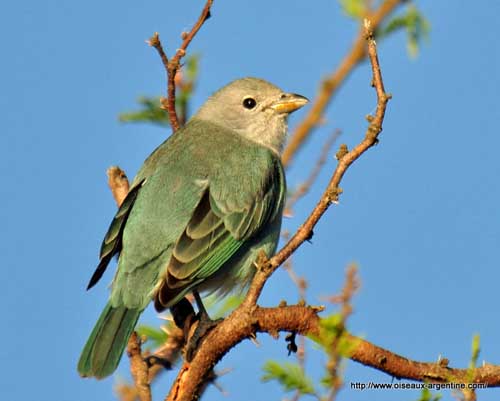
BEHAVIOUR:
The Sayaca Tanager feeds primarily on plant matter such as fruits from numerous plant species and seeds, buds and parts of tender leaves. It also takes arthropods and hymenopterans.
It forages and roosts in small groups of 4-12 birds outside the breeding season, and in pairs during breeding. When roosting in pairs, the female arrives first and the male joins her on the same branch, about at 20 cm.
They mat gather at fruiting trees where they join other mixed-species flocks.
It usually forages in upper trees, but avoids the upper canopy. It regularly occurs lower in shrubs and fruiting trees. Very active, it hops rapidly in foliage, searches for invertebrates in flower heads, and sallies to the air for catching flying insects.
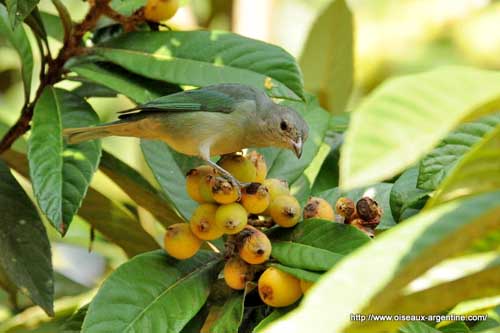
The Sayaca Tanager, as most of tanagers, is monogamous. In the genus Thraupis, the male helps with nest construction. Courtship feeding by male to female is reported, and both parents raise the young.
This species is partially migratory and large numbers spend the winter in NE Bolivia.
FLIGHT:
The Sayaca Tanager is a good flier and flies rapidly between its foraging areas, the nest-site and the roost.
REPRODUCTION:
The breeding season varies according to the range.
The nest is often placed in isolated tree near habitation. The female builds the nest helped by the male. This is a compact cup woven with grass, stems of flowers, rootlets and moss. It may be sometimes covered with lichens, but it is often hidden in the thick vegetation, between 1, 5 and 9 metres above the ground in tree fork. The nest-site seems to be reused year after year.
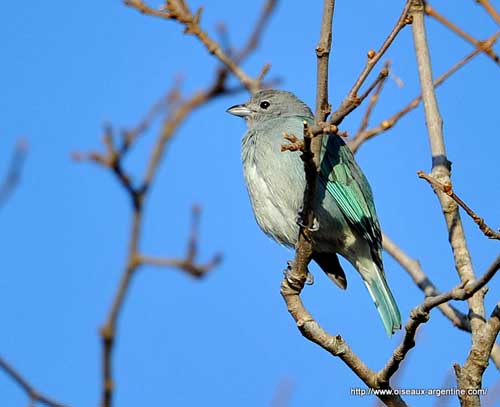
The female usually lays 2 eggs. Their colour may vary from pale yellowish to grey or greenish, with shades of brown. The incubation by female lasts 12-14 days. Both parents feed the chicks. The young fledge within 20 days, but they often remain with the adults for long time after fledging.
The nest is sometimes parasitized by the Shiny Cowbird (Molothrus bonariensis).
DIET:
The Sayaca Tanager feeds primarily on plant matter such as fruits from several fruiting trees’ species, and seeds, buds and tender leaves. Fruits include oranges, papayas, palm fruits and figs (Ficus).
It also takes arthropods and hymenopterans.
PROTECTION / THREATS / STATUS:
The Sayaca Tanager is widespread and common to abundant. Its populations are expanding into a great variety of habitats both rural and urban, and numbers are increasing throughout the range.
This species is not currently threatened.
